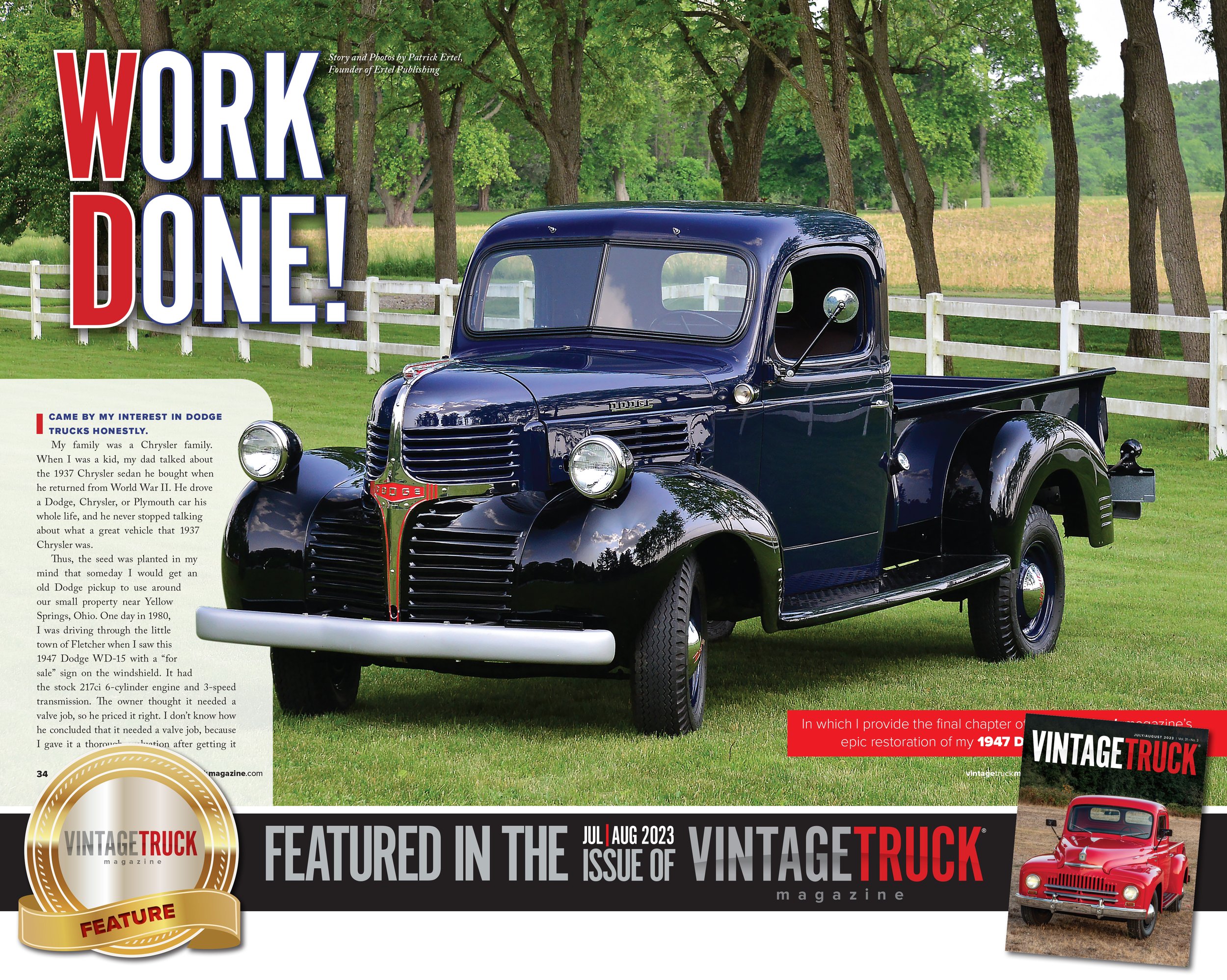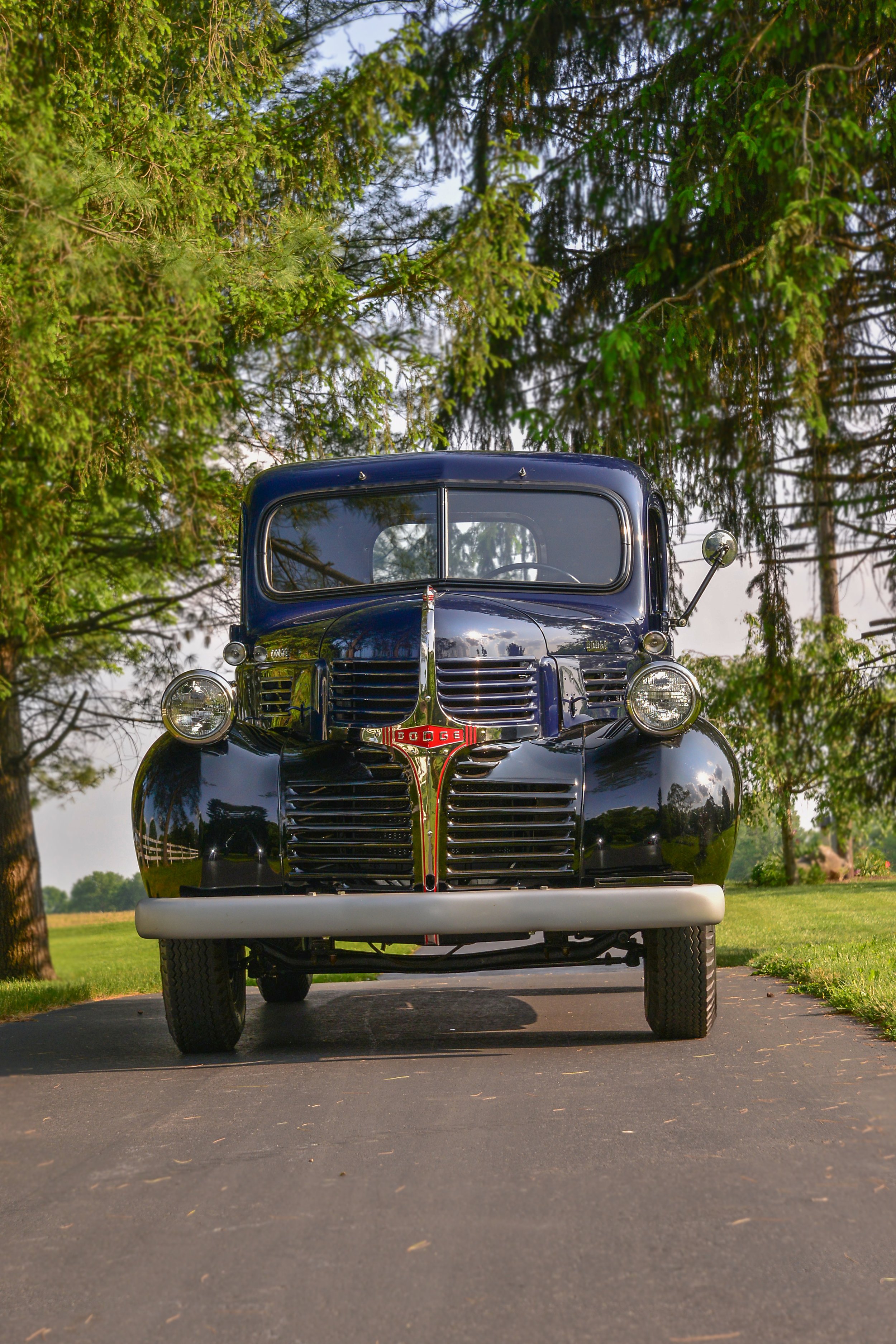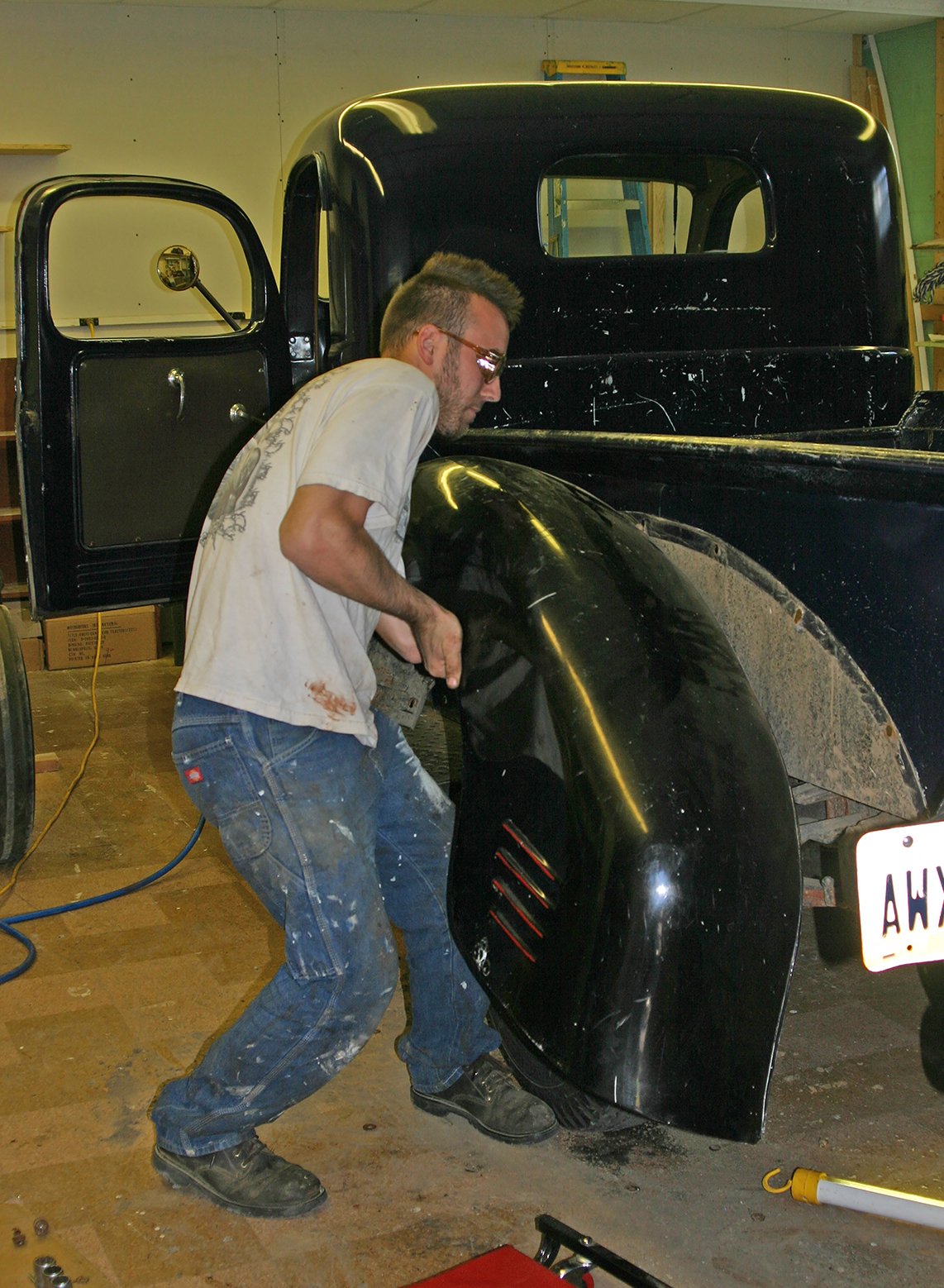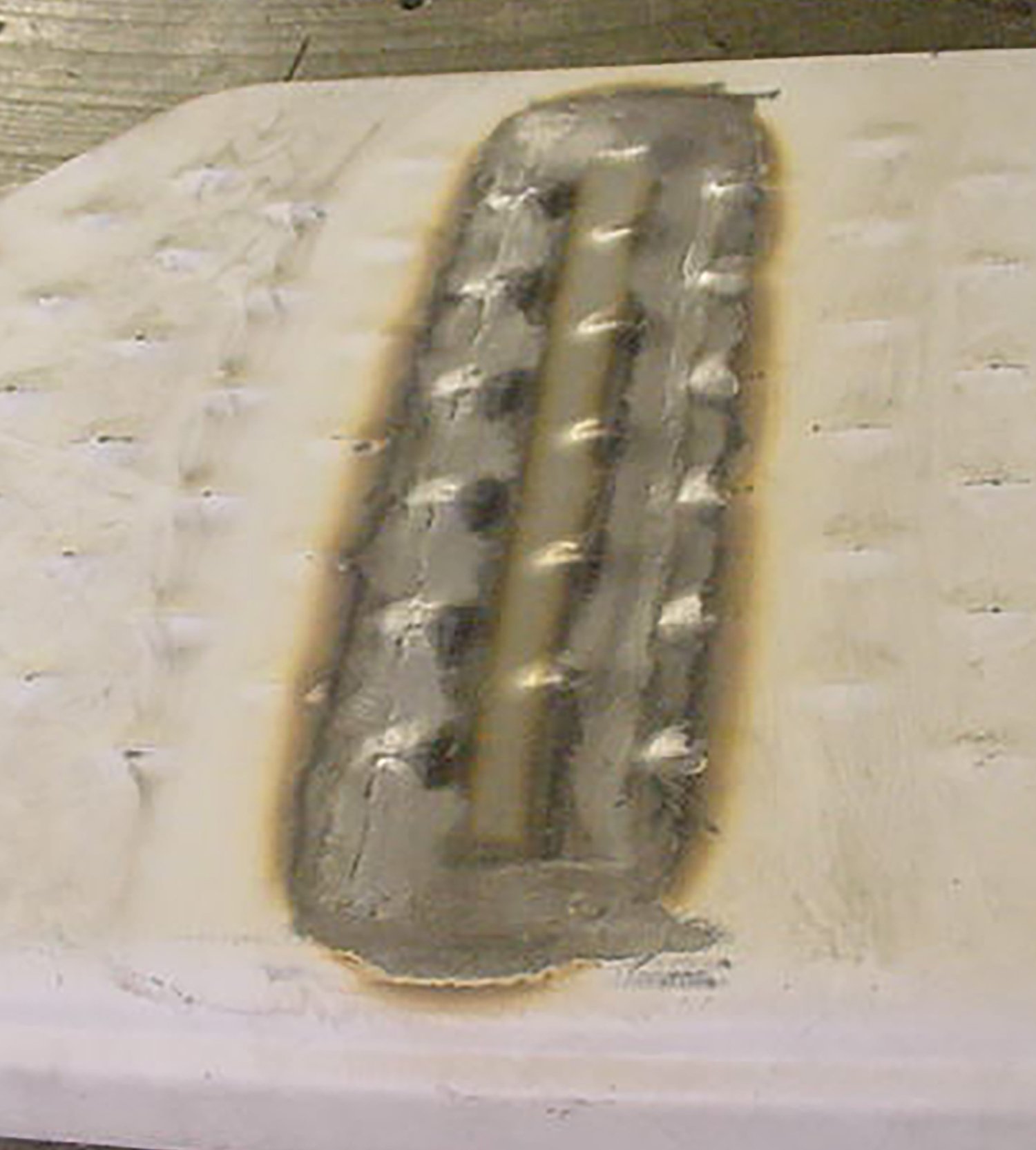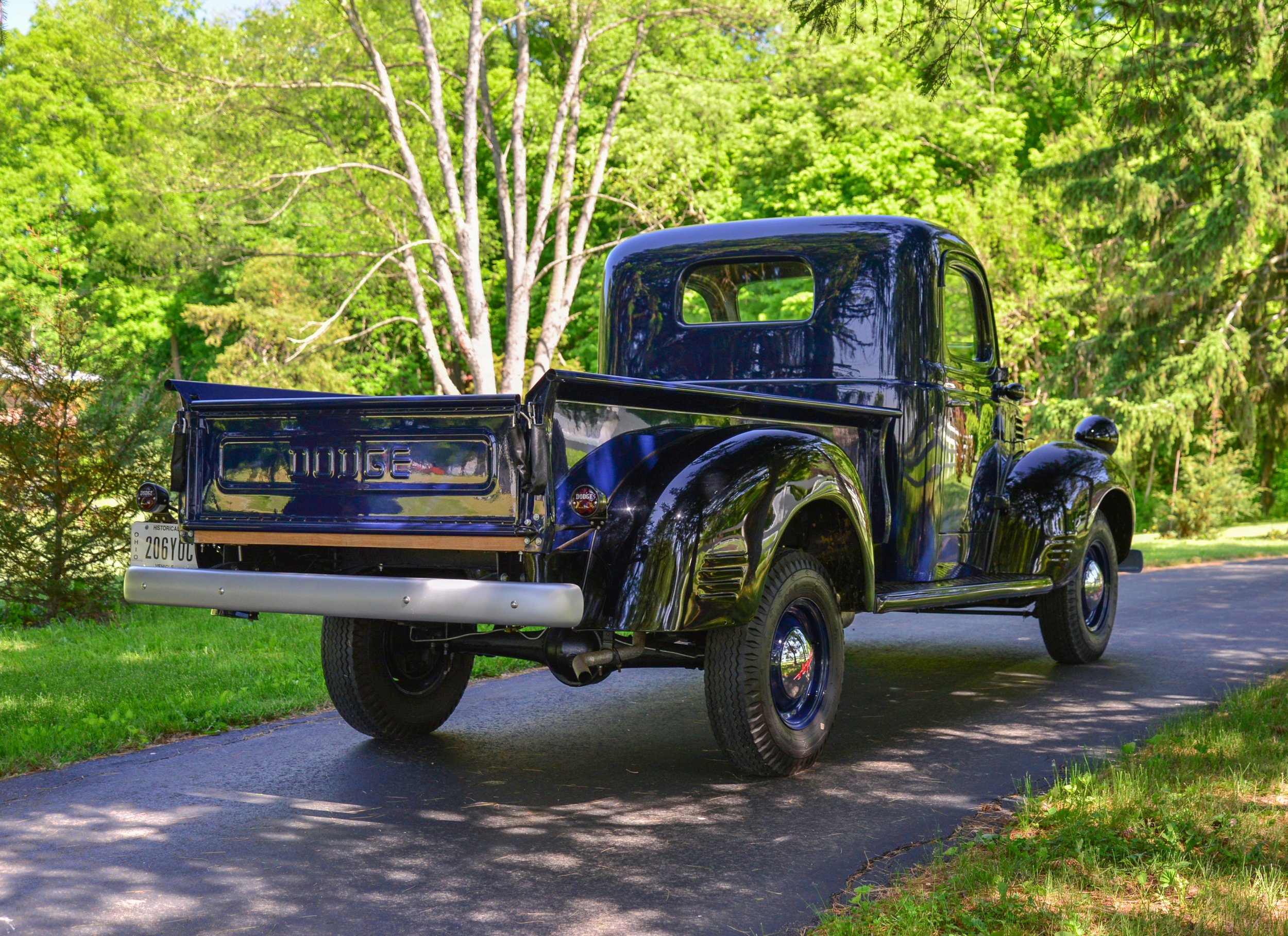Work Done!
/In 1980, Ertel Publishing founder Patrick Ertel bought a 1947 Dodge WD-15 pickup and eventually treated it to a full restoration, much of which was documented in the pages of Vintage Truck magazine. Now enjoying his retirement as a gentleman farmer in rural Ohio, Patrick has decided to sell the Dodge so it can be enjoyed by a new owner. Here is the interesting history of this 3/4-ton Mopar that has just been published in the magazine’s July/August 2023 issue.
HISTORY | 1947 DODGE WD-15
Work Done!
In which I provide the final chapter of Vintage Truck magazine’s epic restoration of my 1947 Dodge WD-15 pickup!
Story and Photos by Patrick Ertel
I came by my interest in Dodge trucks honestly.
My family was a Chrysler family. When I was a kid, my dad talked about the 1937 Chrysler sedan he bought when he returned from World War II. He drove a Dodge, Chrysler, or Plymouth car his whole life, and he never stopped talking about what a great vehicle that 1937 Chrysler was.
Thus, the seed was planted in my mind that someday I would get an old Dodge pickup to use around our small property near Yellow Springs, Ohio. One day in 1980, I was driving through the little town of Fletcher when I saw this 1947 Dodge WD-15 with a “for sale” sign on the windshield. It had the stock 217ci 6-cylinder and 3-speed transmission. The owner thought it needed a valve job, so he priced it right. I don’t know how he concluded that it needed a valve job, because I gave it a thorough evaluation after getting it home and the only problem I found was that he had the battery in backwards. Once I sorted the electrical problem, the truck ran fine for years.
Click thumbnails below to see the full-size photo and caption.
The Dodge was quickly accepted as part of the family and—being a model WD-15—was soon being called “WD” by everyone. For the first 22 years, we used WD like a working truck: moving manure, gravel, mulch—anything that needed hauling for the maintenance of our property. Piling the family into the Dodge and going shopping for our tree was a Christmas tradition for years.
WD must have been destined for fame. I was editing This Old Truck magazine in 1994 when Successful Farming magazine sent a photographer to interview me and photograph my truck for the magazine. Since its debut in Successful Farming, WD has appeared in a video about antique trucks as well as many issues of This Old Truck and (as we renamed it) Vintage Truck magazine, and more was yet to come.
After 12 years of faithful service, the Dodge began exhibiting the hard rattle a rod bearing makes when it’s about to separate from the crankshaft. I like mechanical work and would have enjoyed rebuilding the engine, but I was deeply involved in a rapidly growing publishing business that took up all my time. I have a friend who worked at the testing facility of a major automotive parts manufacturer. When he heard about WD’s problem, he offered to rebuild the engine in the company’s facility. Rather than let old WD sit until I got around to rebuilding the engine, I took him up on the offer. His shop had all the latest engine repair equipment, and it looked like a hospital operating room. The machinists and mechanics there were top-notch. I knew the engine work was done right, and, best of all, I wasn’t the one doing it.
When finished and in its shiny Chrysler Silver paint, the engine looked and ran so beautifully that I briefly considered restoring the rest of the truck to match, but WD was so handy I hated to take him out of service. WD’s body was slowly deteriorating, but I kept finding ways to get a few more years of work out of him. The doors were cracked where the bottom hinges were riveted to them. Whenever the truck moved, the cracked edges rubbed against each other making an awful “nacka, nacka, nacka” sound. I got around this problem for a few years by folding a shop rag and holding it against the hinge while I slammed the door. That kept it quiet, but the cracks continued to spread. Eventually, the lower hinge completely separated from one of the doors.
Finally, one summer, a couple of young men I had working for me forced the restoration question. First, they loaded some old roofing shingles onto WD by throwing them at the truck, missing the bed and—more often than not—hitting the cab and fenders. The sand and nails on the shingles badly scratched the paint of the fender tops, roof, and hood. The last straw was the day I sent them to the gravel pit with WD and a couple of shovels so they could pick up 500 pounds of sand. When they returned, they were proud to tell me that they got the nice guy at the pit to use his loader so they wouldn’t have to shovel the sand by hand. Load it, he did. The weight ticket showed the “nice guy” had dumped 2,900 pounds of sand into the bed of my 60-year-old, 3/4-ton truck. The boys managed to drive the truck home in one piece, but the damage was done. WD staggered around the property with sagging springs and a grinding wheel bearing for another year while I made plans for a full-on restoration.
Ready for his closeup
Fame came knocking again, and WD was assigned one more mission before I took him out of service. A movie production company contacted me about renting a truck to appear in the film version of John Grisham’s A Painted House. The script called for the kind of beat-up old truck a poor dirt farmer would own, and WD was perfect for the role. They needed the truck on site in October 2002. I feared WD would not make the 500-mile trip under his own power, so I rented a trailer and hauled the truck to the set in Memphis.
The production company required their “picture cars” to be ready to perform at a moment’s notice. They had good mechanics who gave WD a thorough tune-up and service even though I had tuned and serviced the truck before taking it to them. They made a half-dozen copies of the ignition key in case one was lost, and it appeared they also emptied the local parts store of everything on the shelf that fit a Chrysler flathead 6-cylinder. The box of parts they sent home with WD included a clutch, fuel pump, water pump, three pieces of rear window glass, and several pounds of smaller parts.
They put something on the paint to make the body look even more dull, rusted, and filthy than it really was, but they cleaned it all off before turning him back over to me. I wasn’t pleased that they dented some hubcaps and caved the roof in somewhat when they strapped a tire to it, but the big box of spare parts they gave me made up for the damage. I was perplexed by the presence of all the rear window glass in the parts pile until I saw a picture of WD taken while he was “in costume” that appeared to show a cracked window. I’m not sure exactly what went on, but when the truck was handed back to me the glass was not cracked. The movie experience was fun even though WD only appeared on screen for a few seconds. They had the truck for about two months. McGee Street Productions treated me well, sending a packet of photos from the set, and, even though WD didn’t have a speaking role, they sent several copies of the script, which I found interesting.
The restoration begins
The roof damage cemented my decision to disassemble WD all the way down to the frame and restore him. The project began in earnest in fall 2005. I am a capable mechanic, but I know my limitations, so I had the extensive rust repair and body work performed by D&D Classic Auto Restoration in Covington, Ohio. D&D is a premier classic vehicle restoration shop, and I wondered if they would take on a lowly old pickup truck. I hauled WD to their facility where the project managers inspected the Dodge. They pointed out areas of rust damage that I had not noticed, and there were a lot of them. We discussed what parts should be saved and which ones I needed to find replacements for. We developed an action plan and agreed on the division of responsibilities. My helper Trevor and I would remove the body parts from the truck, have them sandblasted, and deliver them to D&D where they would perform all the needed body and paint work.
A WD-15 is an uncommon model with parts that aren’t shared with the far more common half-ton Dodge WC model. The guys at D&D recommended replacing the badly rusted bed sides and the driver’s side running board. They didn’t appreciate what they were asking.
Unlike the half-ton and one-ton trucks, the WD-15 has a 90-inch-long bed. Bruce Horkey’s Wood and Parts makes Dodge beds, but the company didn’t make a 90-inch bed at the time. As a last resort, D&D considered getting three 6-foot bed sides from Horkey, sectioning them, and welding them together to form two 90-inch bed sides. I was greatly relieved when Horkey found a way to make 90-inch bed sides for us just in time. Running boards for half-ton Dodges are plentiful, but the WD-15 uses longer running boards. The prospect of finding rare running boards was not good, so the guys at D&D made a die to reproduce the diamond pattern stamped into the factory running boards. They used the die to make repair patches for the rusted areas.
The bodywork was scheduled to take six months. This put the pressure on Trevor and me to quickly take the truck apart and get the sheetmetal to the sandblaster. There was also a lot of mechanical work to be done, including repairing the frame; rebuilding the brakes, rear axle, front axle, and suspension; and repainting the engine. The rebuilding process was interrupted for a few weeks when D&D needed the chassis back to bolt on the body panels so they could check the fit before painting them.
By May 2006, WD and all his parts were back in my shop, and the long process of reassembly, including installing a new interior and wiring harness, began. Many reproduction and NOS parts were readily available from numerous vendors. Bruce Horkey, Vintage Power Wagons, Roberts Motor Parts, and DCM Classics all specialize in old Dodge parts and were very helpful in sourcing what I needed. I worked on WD at a steady, if slow, pace and the truck was substantially finished after seven or eight years. Of course, Vintage Truck magazine followed the restoration’s progress in many issues over the epic project.
However, as with any restoration project, there never was a moment when I could say, “Now it’s finished.” It seems like there is always another little detail to attend to.
WD was so nice with its shiny paint that I was reluctant to put the truck back to work. That’s ironic because—due to all the mechanical work I had done—WD had reliable brakes and a fully functioning electrical system for the first time in my ownership. In theory, it was a much better work truck than it had been all those years I was working it.
Time passes and life goes on. In 2018, we moved to a five-acre truck farm where a beat-up old work truck would be right at home. But WD isn’t a beat-up old truck anymore; it’s a beautiful showpiece that mostly sits in the barn gathering dust. I do take WD to shows now and then, but lately the truck is hardly ever driven. My wife and I decided it is time to turn WD over to someone who will drive it, cherish it, and possibly use it the way we used to. We are aware there are a lot of people who would put in a tilt steering wheel and a V-8 engine, but we hope to find an owner who appreciates the whine of the Dodge transmission and the gentle putter of WD’s flathead engine as much as we do.
Over the years, we shared many miles and many adventures with old WD, but now, after 40 years of faithful service, WD once again has a “for sale” sign on his windshield.
To read more about Patrick Ertel’s 1947 Dodge WD-15, pick up a copy of the July/August 2023 issue of Vintage Truck magazine!
Articles in this issue include:
FEATURES
Mercury Enters the Hauling Field
David DuLong’s 1946 Mercury Express one-ton is a rare beauty from the north!
Story by Joshua Elzey, Photos by Al RogersGrandma Lamb’s Red Truck
Colleen Lamb’s 1950 International L-122 pickup is a low-mile beauty that has been in the family since new!
Story by Bob Tomaine, Photos by Eric NeurathGrandpa Dennis’ Blue Truck
All it took was a child’s encouragement for Dennis McTigue to take home this 1953 Chevrolet 3100!
Story by Garry Foster, Photos by Brad Bowling
DEPARTMENTS
Letter from the Editor
Letters to the Editor
For Ford Fans: 1986 F-150 Styleside
Books in the Bed: Reviews by Robert Gabrick
Photos from the Attic
The Road Less Traveled: Overland Delivery Cars
Aid for the Anxious Amateur: Discerning Differentials
Classifieds
Show Guide
Granny Gear: A Little-Known Part of the Re-restoration Process
If you can't find Vintage Truck on a newsstand near you, call 800-767-5828 or visit our Gift Shop to order current or back issues. To subscribe, call 888-760-8108 or click here.





